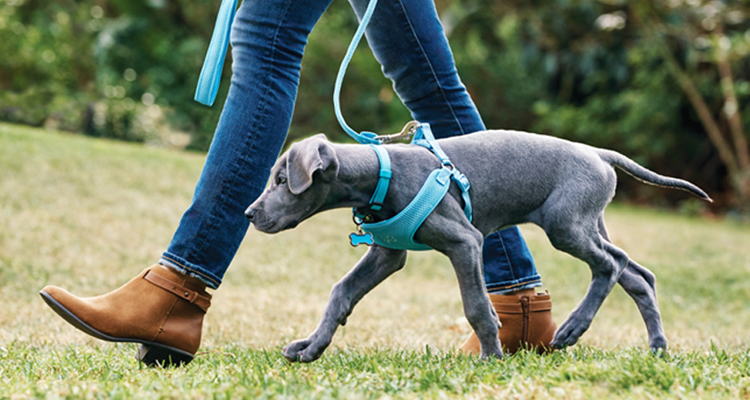Dog Training Near Me: Find Local Experts for Customized Training Programs
Dog Training Near Me: Find Local Experts for Customized Training Programs
Blog Article
Transform Your Canine's Habits With Proven Training Approaches
Transforming your pet's actions requires a nuanced understanding of their individual qualities and demands, in addition to the application of tried and tested training methods. By employing positive reinforcement and identifying important add their body movement, you can successfully resolve common behavioral problems such as excessive jumping or barking. Uniformity in your training strategy not just boosts obedience but also fosters a deeper bond of depend on and regard between you and your animal. The course to effective makeover may provide unpredicted challenges that warrant more expedition.

Understanding Dog Habits
Recognizing dog habits is necessary for efficient training and communication between human beings and their canine companions. Canines, as social animals, display a range of behaviors influenced by genes, environment, and experiences. Recognizing these habits aids owners customize their training approaches to fulfill the specific needs of their canines.
Key aspects of pet behavior include body language, articulations, and social communications. Furthermore, socializing plays a crucial duty in forming actions; dogs that interact positively with various other pets and various people are usually more well-adjusted and adaptable.
In addition, recognizing stress and anxiety signals-- such as panting, avoidance, or pacing actions-- can avoid acceleration right into a lot more severe concerns. Proprietors who are attuned to their pet's behavior can develop a caring and safe environment, cultivating depend on and improving the training procedure. Ultimately, a deep understanding of canine habits lays the foundation for a harmonious connection and efficient training results, guaranteeing both pet dogs and their proprietors prosper together.
Favorable Reinforcement Methods
Favorable support methods are commonly recognized as one of the most effective methods for training canines, promoting a positive discovering environment. This approach includes rewarding wanted behaviors with treats, praise, or play, thus encouraging the pet to duplicate those habits (Dog training). Unlike revengeful methods, positive support develops trust fund and strengthens the bond in between the instructor and the pet dog
Incentives ought to be given quickly following the wanted actions to aid the canine make the connection. Uniformity is additionally necessary; utilizing the same commands and incentives assists the canine understand what is expected.
It is necessary to note that positive support is not concerning bribery; instead, it is about enhancing great actions. Gradually, as the pet dog discovers to link specific actions with favorable end results, the frequency of rewards can be gradually minimized, transitioning to verbal appreciation or periodic rewards. This approach not just motivates obedience however likewise advertises a happy and certain canine, making training an extra enjoyable experience for both events entailed.
Addressing Usual Concerns
Addressing usual concerns during canine training is essential for guaranteeing a harmonious and effective partnership in between the canine and its proprietor. Numerous pet dog owners experience behavioral obstacles, such as too much barking, leaping, and chain drawing. Understanding the origin of these behaviors is important for reliable training.
To alleviate this, provide sufficient physical workout, mental stimulation, and chances for social communication with both people and other pet dogs. Training the canine to sit upon greeting can reroute this habits favorably.
Leash drawing is another prevalent concern, regularly resulting from a canine's passion to explore. Using correct leash handling methods, incorporated with training procedures that motivate loose-leash walking, can significantly boost this behavior.
In enhancement, problems like resource protecting or separation anxiousness call more tips here for customized methods. Progressive desensitization and counter-conditioning can be effective in addressing these difficulties. By recognizing and proactively taking care of these common concerns, canine proprietors can cultivate a much more pleasurable training experience and enhance the bond with their canine companions.
Consistency in Training
Consistency is a cornerstone of reliable dog training, as it develops a clear structure for the pet dog to comprehend behaviors and assumptions. When signs, commands, and incentives are used uniformly, pet dogs can more easily understand what is needed of them. Irregular training can cause complication, causing undesirable behaviors that irritate both the learn the facts here now fitness instructor and the dog.
To accomplish uniformity, it is important that all participants of the home comply with the very same training approaches. Making use of the same verbal cues and hand signals makes certain that the dog gets consistent messages. In addition, the timing of corrections and incentives need to be consistent; instant support raises the possibility that the dog will connect the actions with the end result.
Moreover, establishing a routine can additionally boost uniformity. Normal session, coupled with structured timetables for feeding, walking, and playtime, help canines expect and comprehend their atmosphere, making them more receptive to training. Inevitably, uniformity promotes a feeling of security and count on, encouraging dogs to find out more efficiently. By committing to a structured method, trainers can promote positive habits changes and grow a genteel friend.
Building a Solid Bond
How can promoting a strong bond in between a dog and its proprietor improve the training experience? When a dog really feels secure in its connection with its proprietor, it is much more most likely to exhibit favorable behaviors and be receptive to finding out.

Additionally, a well-established connection can reduce anxiety and behavioral concerns, as pets are less most likely to act out when they really feel recognized and looked after. Prioritizing the growth of a solid bond not only enhances the training experience yet likewise useful link contributes to a better and a lot more well-adjusted pet dog. Ultimately, the journey of training changes right into a collective partnership, leading to lasting behavioral improvements.
Verdict

Proprietors that are attuned to their dog's behavior can produce a nurturing and risk-free setting, promoting trust and enhancing the training process. Eventually, a deep understanding of canine actions lays the structure for an unified relationship and efficient training end results, guaranteeing both pet dogs and their proprietors grow together.
Addressing typical concerns during dog training is important for making sure a successful and unified relationship between the pet dog and its proprietor (Dog training).Uniformity is a foundation of efficient canine training, as it establishes a clear framework for the canine to comprehend habits and expectations.In conclusion, transforming a dog's behavior through confirmed training techniques calls for an understanding of canine actions, the application of positive support methods, and an emphasis on consistency
Report this page